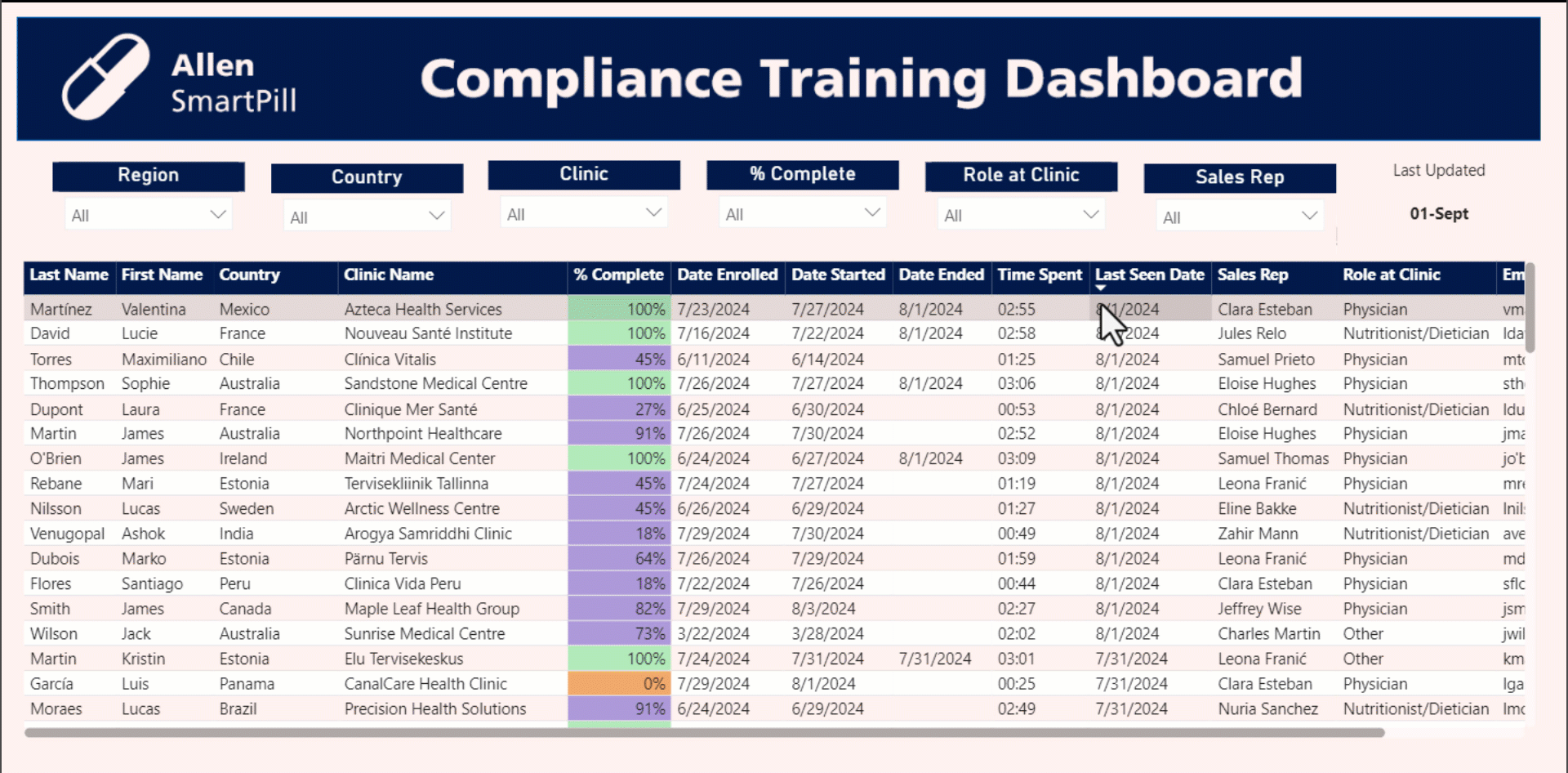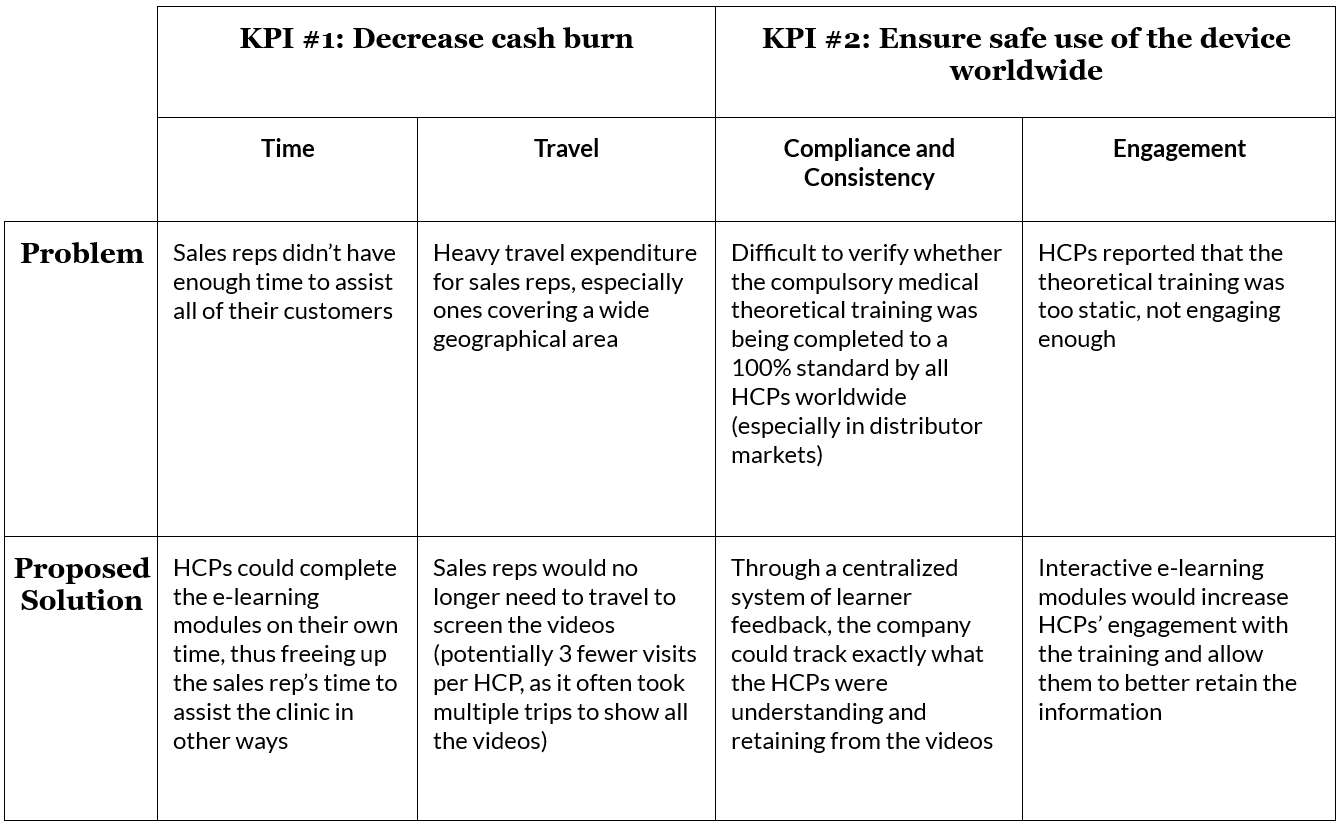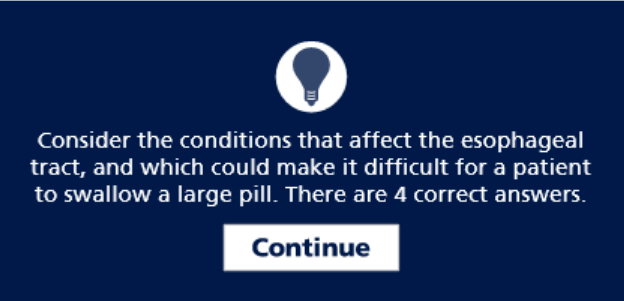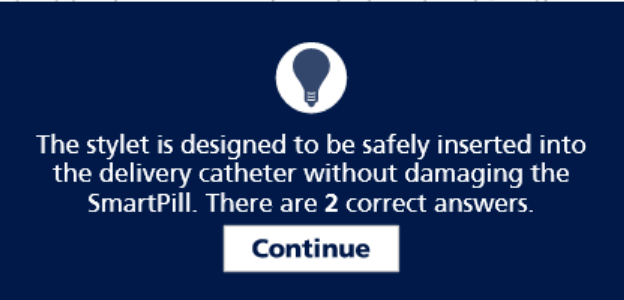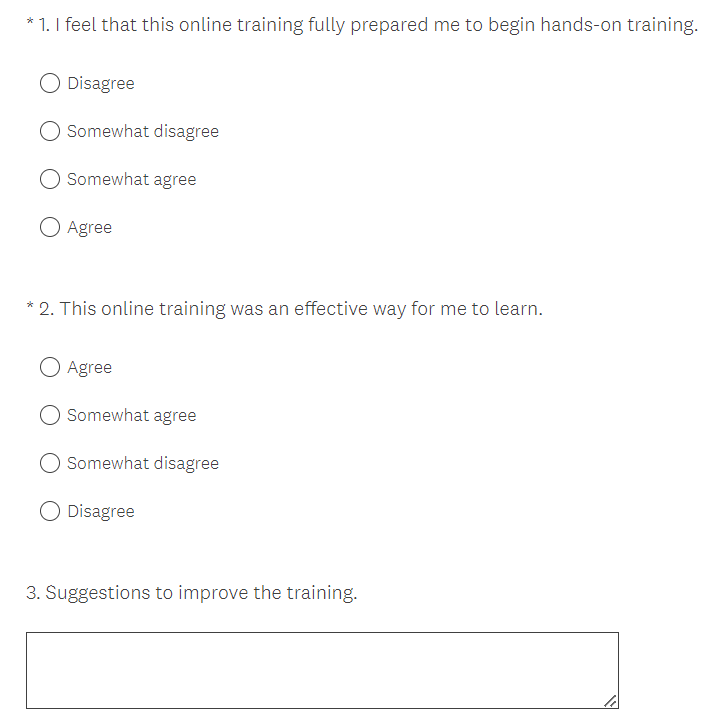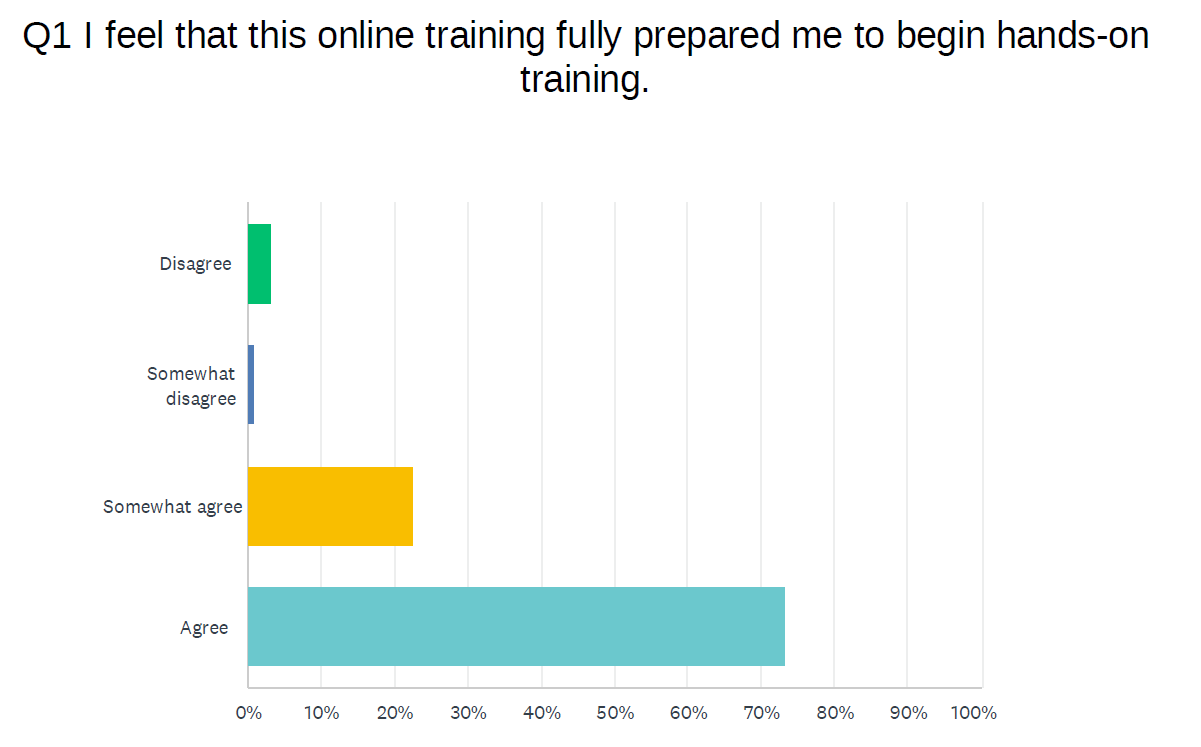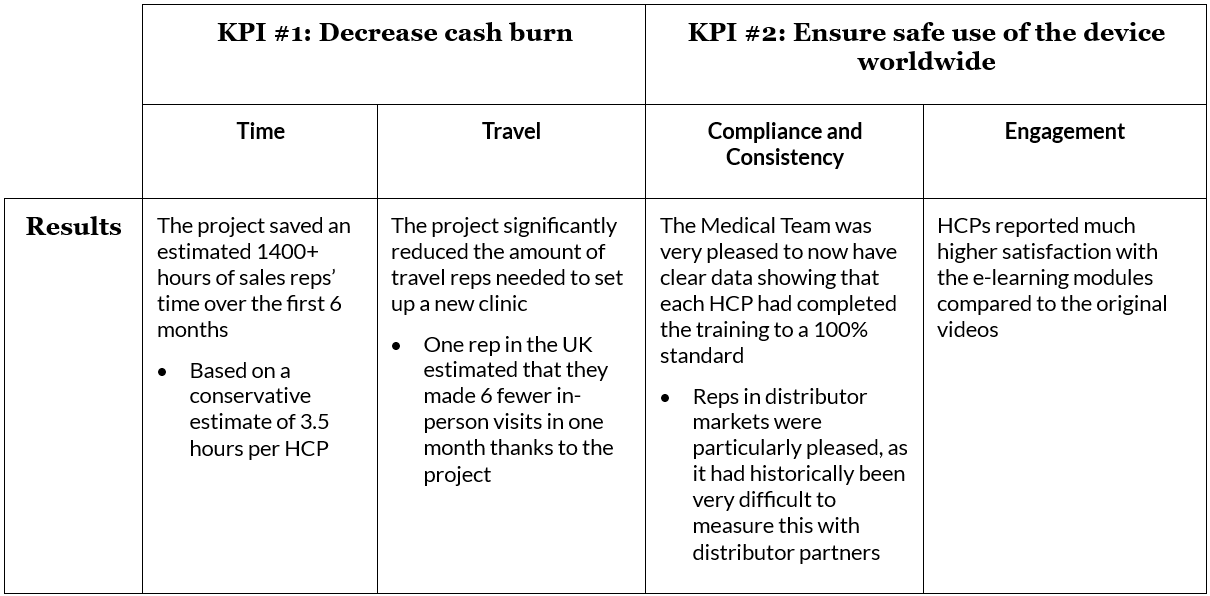Medical Compliance Training
I created this course for a healthcare company offering a swallowable medical device.*
The course is now required onboarding for all health care providers who use the device worldwide.
The course consists of 11 lessons, totaling 3 hours of content.
A powerful feature of this project is the training dashboard. It allows the company to track learners’ progress and view worldwide learning trends.
*For privacy reasons, I’ve removed any identifying company or personal information from the demos and will call the device the “Allen SmartPill.” All results are authentic.
Results
In the first 6 months after launch, here are the project’s statistics:
1400+
Hours of Sales Reps’ Time Saved
95%
Average Learner Satisfaction
29
Countries Where Training Completed
100%
Training Compliance
$120k+
Saved
And here is what people had to say:
In-Depth Project Explanation
My responsibilities for the project included:
Needs assessment
Pitch idea to stakeholders
Storyboard
Design template
Write and edit medical comprehension questions
Edit and subtitle videos
Create training files (12 Articulate files x 8 languages)
Publish to LMS and field test
Design reporting dashboard
Project manage translation into 7 languages (team of 20 validators)
Roll out to sales team, support implementation, communicate progress to stakeholders
Tools used:
Articulate Storyline
PowerBI
Excel
Canva
Happyscribe
Camtasia
Strategy
This project was designed to address several of the company’s key strategic objectives for the year:
The existing theoretical training consisted of a series of videos which sales reps were required to show in person. They would travel to a clinic and, to ensure compliance, stayed in the room and observed the HCPs watching the videos. Later on, a medical specialist would then train the HCPs on how to use the device during a hands-on demonstration.
I proposed transforming the theoretical videos into a series of interactive e-learning modules that HCPs would complete on their own time, accompanied by a reporting system that tracked learning data.
Course Design
My brief from the Medical Team was: I could add things to the videos to make them more engaging, but I could not modify the content itself. I decided to punctuate each video with rigorous questions that would keep the learner engaged: approximately one question per 2 minutes of video content.
I created a template in Articulate Storyline with the following features:
The learner cannot skip through the videos/questions during the first watch
Achieved through careful configuration of the Player’s Play/Pause button and Seekbar
A hotspot cover over the video ensures video timeline and file timeline stay in sync
To assist learners who got stuck, I added “Hint” and “Rewatch” buttons to each question:
I also collected 3 pieces of data per question:
1) Number of tries to answer the question
2) Whether or not the learner used the hint
3) Whether or not the learner re-watched that section of the video
I created variables and triggers to record each piece of data:
Writing Medical Questions
My goal for the training questions was that they would be difficult enough where the learner needed to actually watch the videos in order to answer them, but simple enough that someone who had watched and retained would not become discouraged.
I supplied the Medical Team with a template indicating the possible types of questions they could write. They wrote the first draft of the questions, which I then edited to ensure clarity, rigor, and grammatical consistency.
For each question, we included a “Hint”. We designed the hints carefully to ensure that they were helpful but did not fully give the answer away.
In field testing, I instructed a group of learners to try answering the questions by simply “clicking through,” without having paid attention to the videos. 100% of them reported that the questions were too challenging, and they were forced to go back and actually absorb the content.
To further ensure compliance, I worked with the Legal team to include a disclaimer at the beginning of the training in which the HCP acknowledges that they must complete the training themselves:
Integration with LMS
Obtaining clear learner data from the company’s LMS proved a challenge, as the LMS was relatively “SCORM-unfriendly”. It did not support xAPI statements, and SCORM data could only be obtained through a raw SCORM report showing cmi interactions:
Thus, I extracted variable data using the Short Answer/How Many slide technique. I placed these variable slides at the end of each video and set the timeline to the minimum length, so that they would flip by. I then disguised them by overlaying custom “loading” graphics:
Reporting
The LMS did not display SCORM analytics, and the Sales Team was already familiar with Power BI, so I set out to make a Power BI training dashboard.
First, I coded a report in Excel that interpreted the raw SCORM data. The code was designed to do the following:
Take the “marker” corresponding to each desired piece of data:
2. Look for that marker in the Value column
3. Identify the corresponding cmi.interactions # in the Key column
4. Look for the corresponding “cmi.interactions.#.student_response” in the Key column
5. Record the corresponding value in the Value column:
I wrote this Excel function using a combination of INDEX, MATCH, and FIND operations:
I then designed the layout for the dashboard in PowerPoint and communicated it to the company’s Business Analyst, who built it out in Power BI.
Translation
As this was a global company, we needed to translate the English training into the company’s seven official languages: French, Spanish, Italian, Portuguese, German, Arabic, and Turkish.
I project-managed a 4-month effort to complete these translations using internal resources. I worked with 20 native speakers to translate all of the video content, questions, and Articulate files (12 files per language). We used a variety of AI tools to perform rough drafts of translations, such as HappyScribe and DeepL.
We achieved this effort at a cost of $0, versus an estimated $15,000 budget if the translations had been done professionally.
Learner Feedback
To obtain learner feedback on the training, I added a quick anonymous survey (3 questions) as the second-to-last step of the course:
The survey was strategically positioned to look required, although in reality it did not count towards course completion. In this way, we achieved a response rate of 97%.
Overall, learners reported high levels of satisfaction with this training:
The most common piece of negative feedback was that the videos were too long. I relayed this information to the Medical Team, so that they could take it into account when filming future versions of the videos.
Implementation
We rolled out the training in stages: first English-speaking markets, then French/Spanish, and subsequent languages 2 weeks apart after that. I worked closely with the sales team in each market to ensure that they understood how to enroll their customers in the training, and to fix any bugs as they arose.
The most common difficulty was that customers often needed several reminders to start/finish the training. I set up an automatic weekly email to the sales team encouraging them to check the dashboard, and to follow up with their customers as needed:
I also set up automatic email reminders within the LMS for HCPs who were registered for the training but had not yet started.
Reflections
Overall, this project was highly successful in responding to the company’s objectives and KPIs:
To take this project further, I recommended creating a backend portion of the dashboard that displays learning trends worldwide and locally. These learning trends, as well as the HCPs’ feedback, could then be used to adjust the content of the training based on what learners struggled with the most.
On a personal level, I really enjoyed working on this project, and it was very satisfying to be able to bring a concrete solution to learning and business needs. I appreciated having the opportunity to learn so many new technologies and techniques (Storyline variable trickery, Excel coding, Power BI…). And of course, I really loved getting to work with so many wonderful colleagues all over the world, especially from the Medical and Sales teams, and learning about the specificities of their individual needs and regions.
Would you like to talk more about this project?
Please don’t hesitate to reach out.



